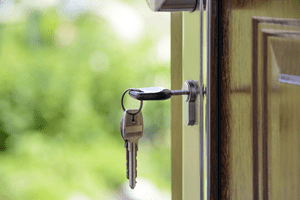7 Tips to Drastically Improve Your Front Door Security
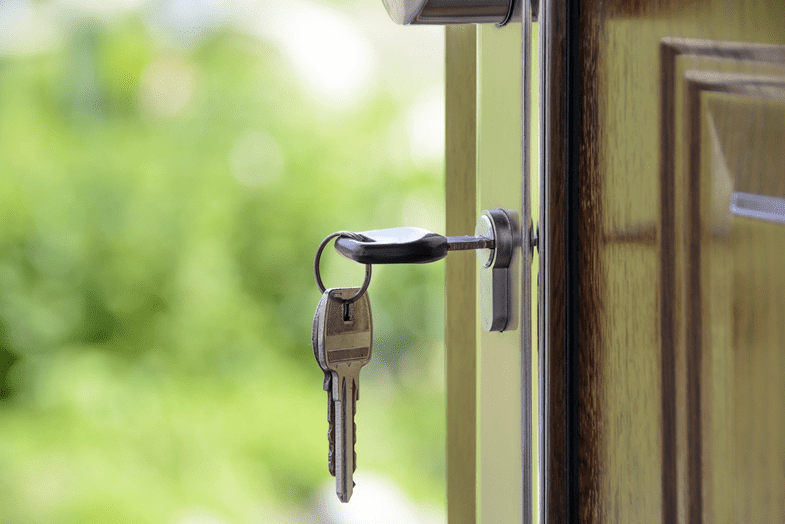
Unlike elaborate burglary movie scenes, home break-ins are usually simpler and, an unlocked front door, is often the reason.
FBI burglary statistics show that the front door to your house is the most common entry points for intruders. That’s why it’s so important to make sure that the front door to your house is as secure as possible.
The following are some of the most common front door security issues and 7 tips to drastically improve your front door security.
Weak Doorjam or Short Latch Span
Most doorknobs and deadbolts work in the same manner – when engaged, the latch slides past the door lock and into the doorframe.
The main components of a door lock include:
- Doorframe
- Door
- Door Jamb
- Doorlock
- Strike plate
- Door Knob
- Metal bolt/latch
- Hinges
The door latch in most cases reaches only between 1/2 and 1 inches into the door frame, which is just enough to keep your door closed.
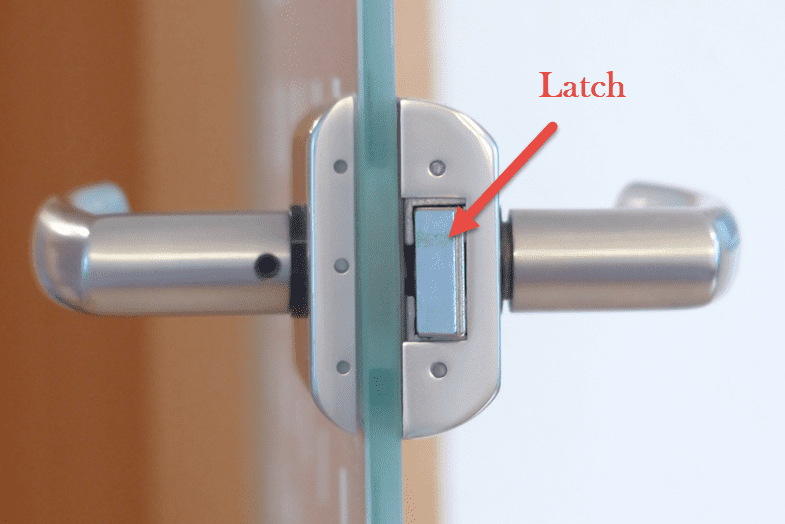
The doorframe surrounds the door and attaches to your homes’structure.
The door jamb is a metal plate attached to the doorframe and is where the lock bolt slides into.
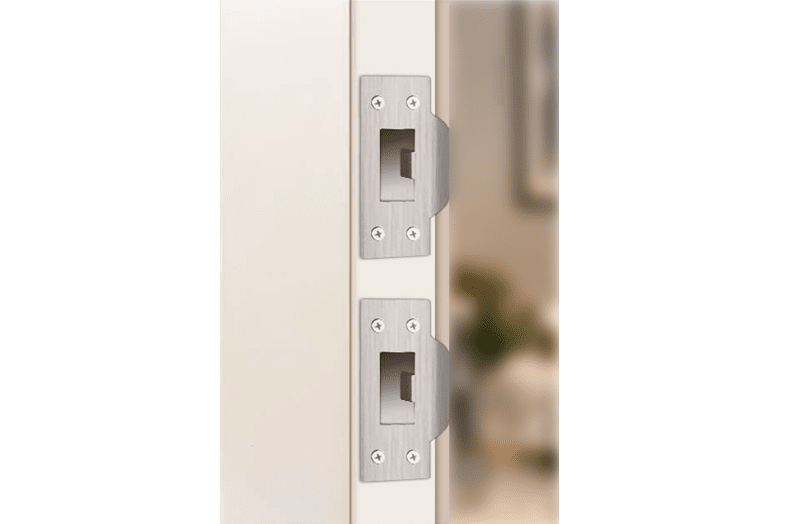
The strike plate is another metal plate but this one is part of the door lock or deadbolt. Both the door jamb and strike plate serve to provide door latching reinforcement.
The problem is that your typical wood doorframe is not that sturdy and, the screws used to secure the door jamb and strike plate are often only 3/4 inch in length.
This means that in most cases, door jambs and strike plates are weakly attached to thin doorframes and doors respectively, making it easier for an intruder to breakdown the door with just a few kicks.
Tip 1 – Use Longer Screws to Secure Metal Plates
The easiest and cheapest solution is to replace the screws securing the door jamb and strike plates with longer screws. This simple DIY upgrade can drastically improve your front door security for less than a cup of coffee.
- Replace the shorter screws with 3-inch screws – the longer screws will screw past the doorframe and into the home’s wood studs. Using longer screws to secure the strike plate will also reach deeper into the door providing added strength. Using longer screws at both the door jamb and strike plate will make it harder for an intruder to kick down your door.
- If you really want to improve your door’s integrity, consider upgrading to a one-piece door jamb like this one from PrimeLine. This model replaces your standard, separate latch and deadbolt strike plates, with a one-piece combo. For an even bigger upgrade, consider a longer door jamb like this one from Door Jamp Pro. Its one-piece door jamb and extended length (about 4 feet total) combination can virtually eliminate the possibility of the door frame ever failing.
Weak Door Hinges
The problem discussed earlier also applies to hinges. Door hinges attach the door to the and doorframe and provide pivot points when the door swings open or close.
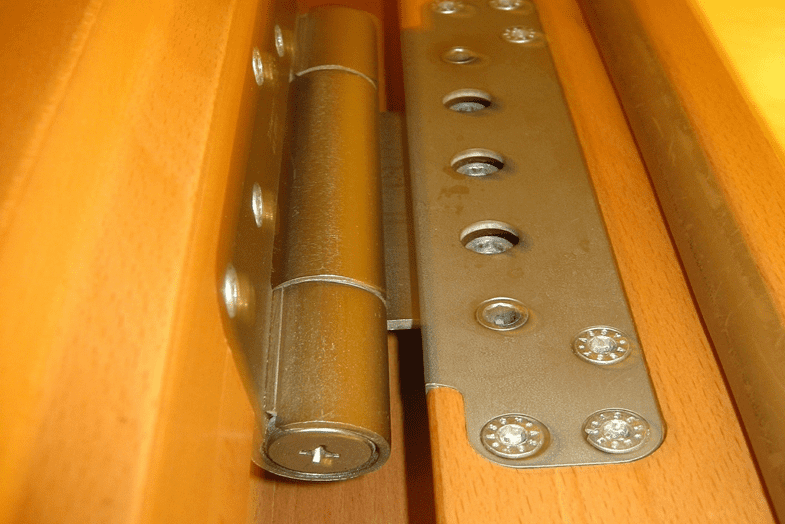
Unfortunately, the door jam and strike plate issue identified earlier also applies to the hinges – door hinges are often attached with short screws and can end up falling out over time as the door is used.
The fix is the same.
Improve Front Door Security Tip 2 – Use Longer Screws to Secure Door Hinges
It may appear obvious after reading about Tip 1, but simply replacing your hinge screws with longer ones will drastically improve your door’s sturdiness.
- Replace hinge screws with 3 -inch screws. The longer screws will fasten deeper past the door frame and into the wood studs as well as deeper in the door itself.
Assuming you have a solid core door, this combination will provide added security opposite of the door lock side, and together with long screws at the door jamb and strike plate will provide a whole- door security upgrade.
A Weak or Non-Solid Core Door
Most home exterior doors are built sturdily these days. However, not all doors are the same. For added protection, exterior doors should always be solid core.
If your door is hollow inside, even if the shell is made of metal, it might still be easy to kick open.
So here’s my next recommendation… Upgrade!
Tip 3 – Upgrade your Front Door to a Solid Core Door
Upgrade your door to a solid core door. Doors come in various types, but the main difference is between Solid vs hollow core doors, which is the solid material inside the door panels.
A solid core door will provide additional security with the added material. Assuming your hinges, screws, and strike plates are reinforced, the only way to get in is with an axe.
Solid core doors can also provide better thermal insulation and noise reduction than hollo core doors.
A solid core door will include Make sure that your exterior doors are completely solid. By that, I mean that they aren’t hollow at all inside. A solid wood door will hold up far better when being kicked in than any hollow-core door. The only way through will be an axe, which is a good thing if a firefighter needs to break in and save your life. But there aren’t many intruders out there that will be willing to make such a scene by chopping up your front door with an axe.
Another problem with front doors is that a lot of them have decorative windows. That’s nice and all, but it’s far less secure than a solid door with no windows. Don’t get me wrong, those doors look great, and the glass they use is really strong. So having a window in your door isn’t the end of the world. But if you want to make your door impenetrable, I suggest going with a solid one.

